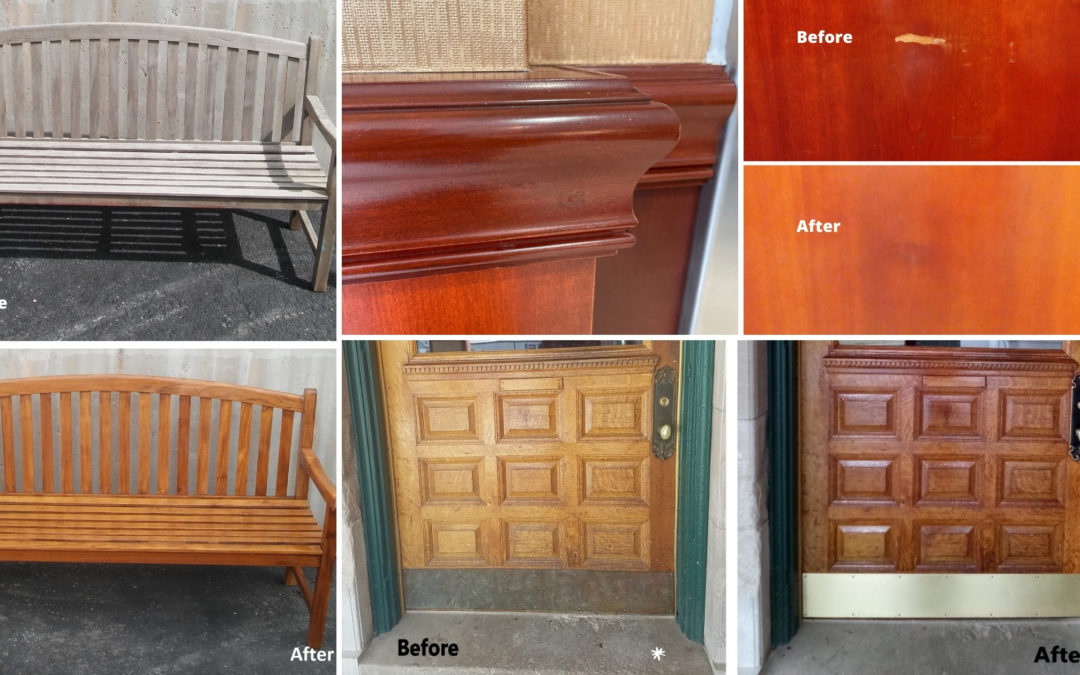One question we are often asked KCR from our customers is how to safely remove scratches from wood. Scratches, dings, or dents on your wood surfaces including tables and doors can be removed to look new again.
There are a few things you can do repair minor scratches without sanding or refinishing. Very light scratches are those you can see with your eye, but you don’t feel them when you run a finger across it. These just need a little cosmetic fixing, which is very easy to do. The method you’ll need to use depends on the tone of the wood.
Many times, scratches are just in the wax buildup on furniture. If there is buildup in addition to scratches, be sure you remove the wax buildup before trying to fix scratches in wood.
Covering Scratches in Light Wood
Using a nut: Match the color of the nut with the color of the furniture, then forcefully rub the nut on the scratch. Pecan, walnut, and peanut all work well. You can even use peanut butter or almond butter. The nut oil darkens the exposed wood and makes the scratch disappear. Once you’re happy with how it looks, press your fingertip over it for a minute. The heat of your skin helps the nut oil sink into the wood.
Using olive oil and vinegar: Combine 1 part white distilled vinegar and 2 parts olive oil. Whisk until completely mixed, then dab the mixture onto the scratch. The vinegar’s acetic acid helps fill the scratch, while the olive oil corrects the scratch’s color and moisturizes the wood. Repeat until you can’t see the scratch.
Covering Light Scratches in Dark Wood
Dark wood comes in a variety of tones and colors. To cover scratches in dark furniture, choose a coloring agent that matches the wood.
Mahogany or cherry wood: use iodine or shoe polish.
Darker woods like acacia: use damp coffee grounds.
Medium-colored wood: use black tea. The darker the wood, the stronger the tea you should use.
Ebony wood: use fireplace or wood ash mixed with a little water to form a paste.
Use a cotton swab or paintbrush to apply a heavy layer of whatever coloring agent you chose, taking care not to get it on the surrounding wood. Let it sit in place for an hour or so, then wipe away the excess. Finish by using a furniture polish to set the color.
Sometimes, there’s just no getting around the use of sanding and refinishing to remove scratches or dents on wood surfaces. If the item is painted, for example, any dents or scratches probably removed the paint as well. But you may not have to refinish or repaint the entire piece, provided you’ve got more matching finish or paint. If the wood is heavily damaged or if it’s valuable or sentimentally irreplaceable item, you should always consult with a professional.

